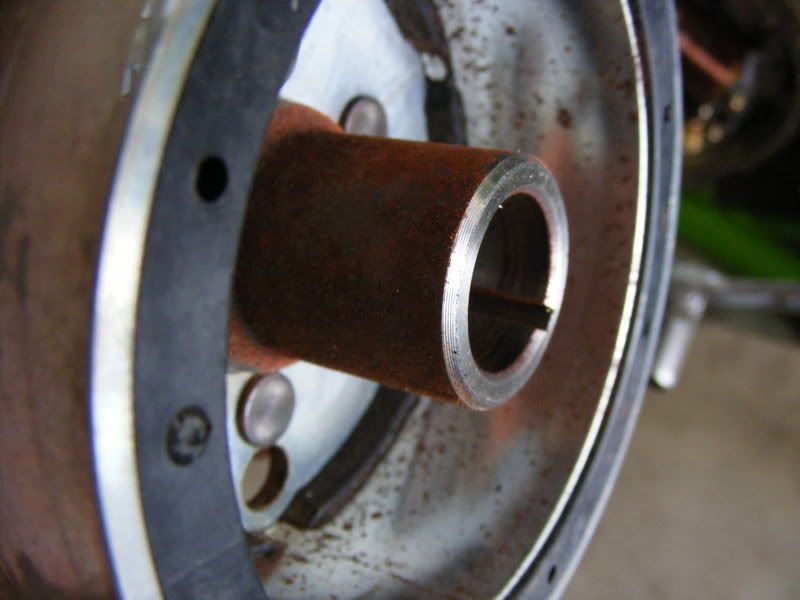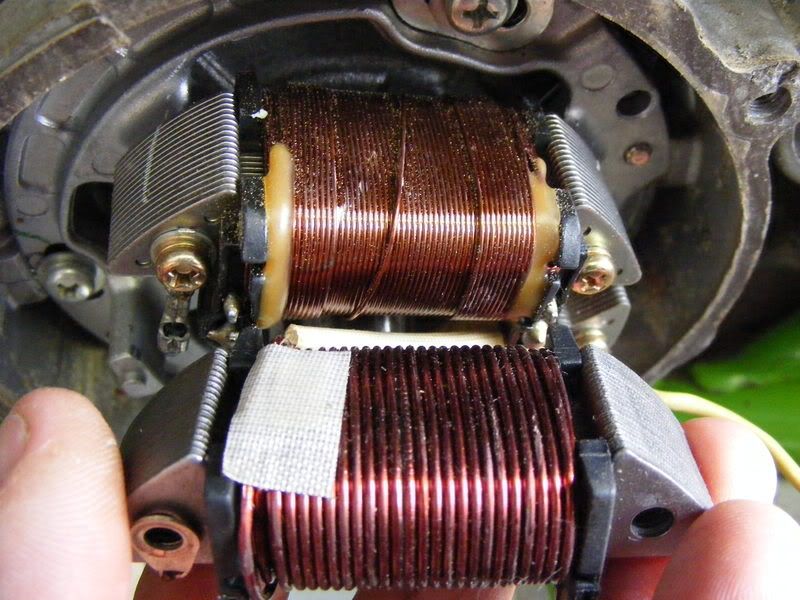Darn tootin' I'm ALL over it!

What was the question? WAS there a question?

What makes 'power' is two rather different things, one of 'em current, one of 'em voltage. The rotating magnets (and thus the magnetic fields surrounding them) glued onto the flywheel generate electricity when that field 'cuts' (moves across) the coil.
The more 'cuts', the more voltage.
The thicker the wire, the greater the ability to carry the current to push that voltage.
There is almost always a 'loss point' (my phrase) to one or the other...or both. You can wrap the plates with a whole lotta fine wire, get a high voltage (like the sparky coil), but you won't have the current needed to accomplish much power-wise 'cuz you won't have enough current. You can use real thick wire that will carry a lot of current...but then you won't be able to wrap enough layers around the plates to generate any voltage.
You can use more plates, real thick wire, AND wrap it alot of times...but where is it going to fit? An how much power is going to be generated when that puny rotor flies past your coil that's the size of a small car?
The top coil looks like an OEM unit to me. The bottom looks like an Electrex coil, which is what Fredette (and MSR, and others I suppose) sold.
Lots of things make a lot of small differences...add them up to hopefully get something that works. Canadian Dave used to simply RE-wrap coils with the same wire. He had come to the conclusion that a tighter/closer wrap of the same wire improved the coil's output.
I never tried that. Don't know how effective it was.
To test either/both of them, you will need some sort of adjustable load...like a carbon pile setup or a wire-wound/ceramic resistor that has something akin to an adjustable center-tap. Hook up a couple of meters...see how much current they put out before the voltage drops below a useable level. You can guage that 'useable level' by putting a lamp in the circuit...watch for it to dim while you add load to the coil output.
Unlikely you want to bother with any of that.....
Depending on the quality of the construction, wire, and wiring, either of the coils pictured could be better than the other one. Chances are the bottom one will put out more P=IxE... Power in watts = current in amperes multiplied by voltage...in volts!.
...or giga/mega/kilo/milli/micro-s thereof.
You're not dealing with a 'power to spare!' issue.





